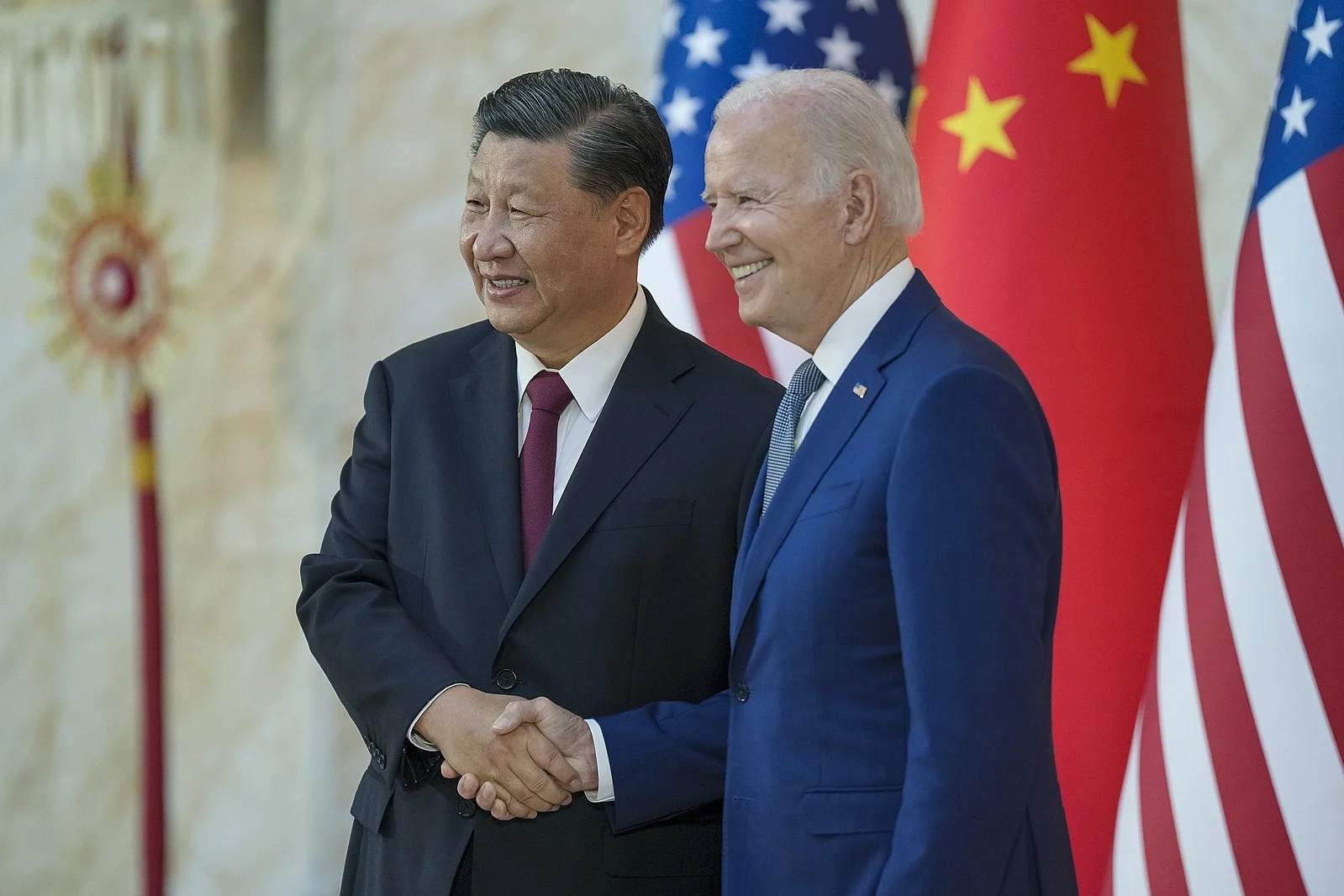Congressional Report on American Investment in China’s Technology Follows Global Trade Restrictions on Engagement with China’s Semiconductor Industry
Joe Biden and Chinese President Xi Jinping posing before the 2022 G20 Summit in Bali. (Commons)
A bipartisan congressional investigation found that U.S. private equity firms have invested 1.2 billion dollars into Chinese semiconductor manufacturing. The report, published in February 2024, alleges that these investments support Chinese companies that build technologies used by the Chinese military.
Members of the House Select Committee on the Strategic Competition between the United States and the Chinese Communist Party investigated the investments of five U.S. venture capital firms: GCV Capital, GSR Ventures, Qualcomm Ventures, and WALDEN International. The report alleges that American venture capital firms have invested in companies that seek to outcompete U.S. technologies and support the Chinese government’s surveillance of its people.
This potentially poses a national security threat, as U.S. dollars help China increase its military capacities. Semiconductors are vital components of modern technology, such as cars and cell phones. They also have uses in military technologies such as weapons modeling systems, according to the Department of State. The civil and military applications mean that advanced semiconductors are considered ‘dual use goods,’ and are vital to U.S. national security interests. National Security Advisor Jake Sullivan stated in 2022 that the United States has sought to maintain ‘as large of a lead as possible’ in semiconductor technology over China. South Korea and Taiwan operate according to similar measures that regulate foreign investments in China, according to the Center for Strategic and International Studies. Under these rules, government boards screen outgoing investments, preventing the leakage of important technologies to China.
Following the start of the investigation in July 2023, the Biden administration restricted American investments in the Chinese technology sector, specifically in advanced semiconductors, reports the New York Times. These restrictions followed 2022 restrictions on the sale of semiconductors and semiconductor making equipment made with U.S. technology, software, or machinery to China. The New York Times adds that the restrictions are intended to curb China’s ability to develop and produce semiconductors, as some of the most advanced Chinese semiconductors were produced in California and Taiwan.
Until the global supply chain of semiconductors is no longer reliant on production in China, China will maintain its central role in global semiconductor technology. In August, the United States gave South Korea a waiver exempting them from regulations, allowing them to continue manufacturing in China. According to the New York Times, Some South Korean firms make up to 40 percent of their semiconductors in China. This waiver allows them time to increase domestic production capacities and exempts them from the U.S restrictions.
In response to global desires to move away from China’s semiconductor industry, India has ramped up development of its own sector. India is currently a top designer of semiconductors, but it does not manufacture chips domestically. The Indian government has been supporting companies that produce technologies since 2020 through Production Linked Incentive Schemes, programs that funnel money into companies that can produce technologies in India.

